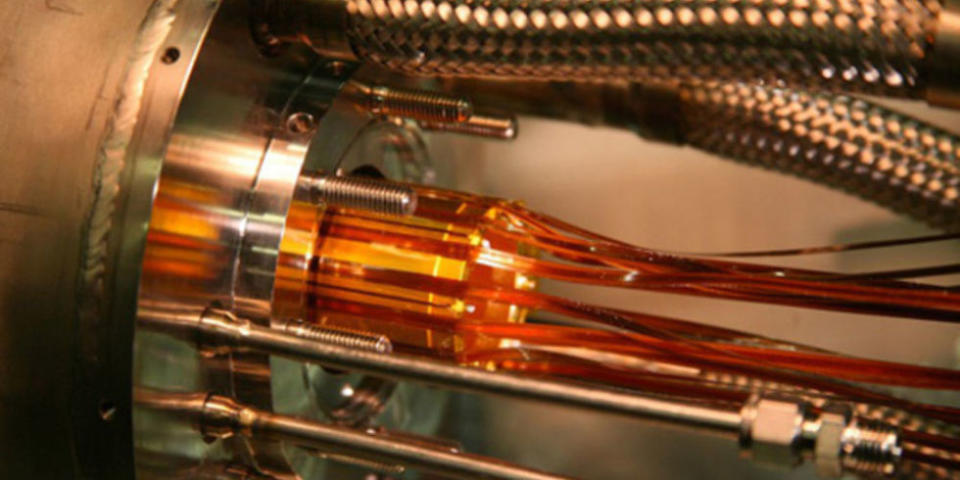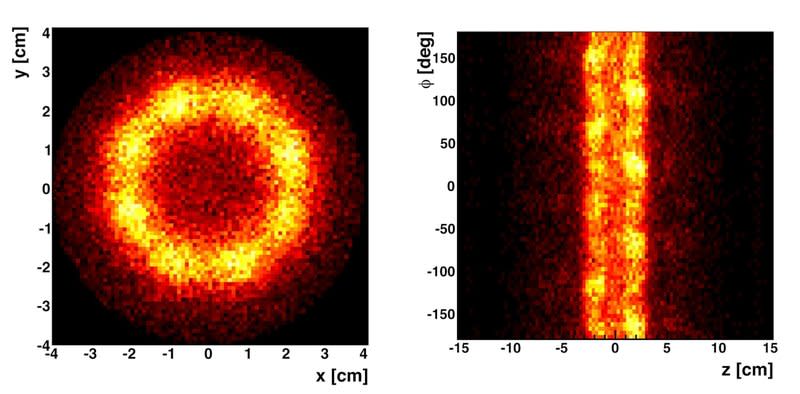Scientists Measure Antimatter for the First Time

Antimatter isn't the absurd theoretical substance it sounds like-it's just material composed of particles that have the same mass as conventional particles, but opposite charges. An electron with a positive charge is called a positron, and a proton with a negative charge is called an antiproton. Material composed of these antiparticles is called antimatter.
In a groundbreaking experiment published today in Nature, physicists at CERN, the European Organization for Nuclear Research's particle physics lab outside Geneva, have measured the energy levels of antihydrogen for the first time. Hydrogen is the simplest element on the periodic table, with just one electron and one proton, so making antihydrogen is easier than any other type of antimatter.
It's incredibly difficult to create antimatter and retain it for any extended period of time. This is because antimatter and matter annihilate each other when they come into contact. An electron and positron will zap each other out of existence, releasing energy in the form of light, and protons and antiprotons do the same. Considering conventional matter is floating all around our world, it can be quite difficult to keep antimatter from coming into contact with it.
"What you hear about in science fiction-that antimatter gets annihilated by normal matter-is 100 percent true," Jeffrey Hangst, a physicist at Denmark's Aarhus University who founded the ALPHA group at CERN to study antimatter, told NPR. "[It] is the greatest challenge in my everyday life."

To create antihydrogen, ALPHA physicists combined positrons and antiprotons in a vacuum tube and used extremely powerful magnetic fields to keep the resulting antihydrogen from colliding with the walls of the container. Using this technique, the team has successfully maintained antihydrogen atoms for about 15 minutes.
Electrons orbit the nucleus of conventional atoms at different energy levels, and when they move from one energy level to another, they let off energy that can be measured as light on the electromagnetic spectrum. The same is true for antihydrogen atoms.
The ALPHA researchers used a laser to excite the antihydrogen so the positrons would jump from a lower energy level to a higher one. Then, when the positrons return to the lower energy level, scientists can measure the light released. What they found is that positrons in antihydrogen move from one energy level to another in the same way that electrons do in normal hydrogen.
This seemingly benign finding has actually captured the attention of theoretical physicists around the world because it is central to one of the great mysteries of the universe: Why does anything exist at all? Models of the Big Bang suggest that an equal amount of matter and antimatter should have been created. As far as we can tell, all of the antimatter and matter of the universe should have been annihilated shortly after it was created. But here we are.
"Something happened," Hangst told NPR, "some small asymmetry that led some of the matter to survive, and we simply have no good idea that explains that right now."
It could be that antimatter doesn't obey the same laws of physics as matter. It could be that our models of the Big Bang are flawed. But whatever the true answer to our existence is, experiments with antimatter like this one could unlock the secrets. Our first experiment suggests that antihydrogen behaves just like boring old hydrogen-but this is merely the beginning of a new kind of scientific study.
You Might Also Like

